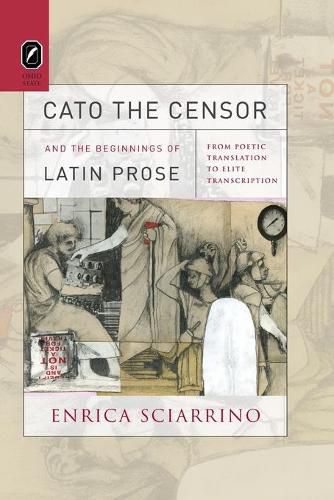Readings Newsletter
Become a Readings Member to make your shopping experience even easier.
Sign in or sign up for free!
You’re not far away from qualifying for FREE standard shipping within Australia
You’ve qualified for FREE standard shipping within Australia
The cart is loading…






This title is printed to order. This book may have been self-published. If so, we cannot guarantee the quality of the content. In the main most books will have gone through the editing process however some may not. We therefore suggest that you be aware of this before ordering this book. If in doubt check either the author or publisher’s details as we are unable to accept any returns unless they are faulty. Please contact us if you have any questions.
In the past decade, classical scholarship has been polarized by questions concerning the establishment of a literary tradition in Latin in the late third century BCE. On one side of the divide, there are those scholars who insist on the primacy of literature as a hermeneutical category and who, consequently, maintain a focus on poetic texts and their relationship with Hellenistic precedents. On the other side are those who prefer to rely on a pool of Latin terms as pointers to larger sociohistorical dynamics, and who see the emergence of Latin literature as one expression of these dynamics. Through a methodologically innovative exploration of the interlacing of genre and form with practice, Enrica Sciarrinobridges the gap between these two scholarly camps and develops new areas of inquiry by rescuing from the margins of scholarship the earliest remnants of Latin prose associated with Cato the Censor–a new man and one of the most influential politicians of his day. By systematically analyzing poetic and prose texts in relation to one another and to diverse authorial subjectivities, Cato the Censor and the Beginnings of Latin Prose: From Poetic Translation to Elite Transcription offers an entirely new perspective on the formation of Latin literature, challenges current assumptions about Roman cultural hierarchies, and sheds light on the social value attributed to different types of writing practices in mid-Republican Rome.
$9.00 standard shipping within Australia
FREE standard shipping within Australia for orders over $100.00
Express & International shipping calculated at checkout
This title is printed to order. This book may have been self-published. If so, we cannot guarantee the quality of the content. In the main most books will have gone through the editing process however some may not. We therefore suggest that you be aware of this before ordering this book. If in doubt check either the author or publisher’s details as we are unable to accept any returns unless they are faulty. Please contact us if you have any questions.
In the past decade, classical scholarship has been polarized by questions concerning the establishment of a literary tradition in Latin in the late third century BCE. On one side of the divide, there are those scholars who insist on the primacy of literature as a hermeneutical category and who, consequently, maintain a focus on poetic texts and their relationship with Hellenistic precedents. On the other side are those who prefer to rely on a pool of Latin terms as pointers to larger sociohistorical dynamics, and who see the emergence of Latin literature as one expression of these dynamics. Through a methodologically innovative exploration of the interlacing of genre and form with practice, Enrica Sciarrinobridges the gap between these two scholarly camps and develops new areas of inquiry by rescuing from the margins of scholarship the earliest remnants of Latin prose associated with Cato the Censor–a new man and one of the most influential politicians of his day. By systematically analyzing poetic and prose texts in relation to one another and to diverse authorial subjectivities, Cato the Censor and the Beginnings of Latin Prose: From Poetic Translation to Elite Transcription offers an entirely new perspective on the formation of Latin literature, challenges current assumptions about Roman cultural hierarchies, and sheds light on the social value attributed to different types of writing practices in mid-Republican Rome.